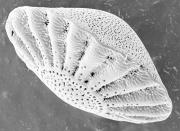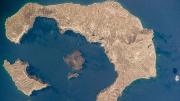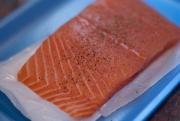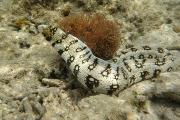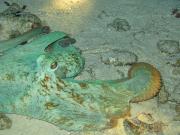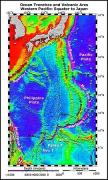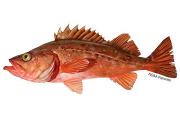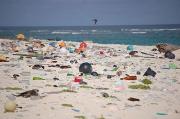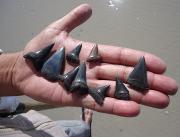Radio Program
Our regular Science and the SeaTM radio program presents marine science topics in an engaging two-minute story format. Our script writers gather ideas for the radio program from the University of Texas Marine Science Institute's researchers and from our very popular college class, Introduction to Oceanography, which we teach to hundreds of non-science majors at The University of Texas at Austin every year. Our radio programs are distributed at to commercial and public radio stations across the country.
To borrow an old phrase, everything old is new again. Consider life in the Arctic Ocean. As the ocean warmed up after the last Ice Age, it was divided into several layers. The layering made life hard for the smallest members of the marine food chain. And with the Arctic growing warmer now, the same thing could happen again. That could limit not only microscopic life, but larger organisms as well.
A volcano responsible for one of the most powerful eruptions of the last 10,000 years may be settling in for a nap—the result of higher sea levels.
Salmon, tuna, herring, and other fish aren’t just tasty. They’re packed with omega-3 fatty acids -- healthy fats that may help improve everything from Alzheimer’s to heart disease to arthritis. And a recent study found that you might be able to add migraines to the list as well.
Migraines affect millions of Americans. They generate sharp pain, nausea, and other nasty symptoms. A migraine can last for hours, and it can make it impossible to work or do much of anything else. And many people have chronic migraines, with many attacks per month.
The snowflake moray eel has been known to slither onto the beach to catch a tasty crab. That’s not all that unusual -- several species of fish sometimes leave the water to eat. But the snowflake really leaves the water behind. Unlike other fish, it can swallow its prey without swallowing water to wash it down.
If your arms and legs are a little stiff when you get out of bed in the morning, you might be envious of the octopus. It has some of the most flexible appendages yet studied. Its eight arms can move in several ways, in any direction, and at any point on the arm.
Doctors sometimes run tests even when they know you’re just fine. The tests tell them how your body works when it is fine, making it easier to figure out what’s wrong when you’re sick.
Marine biologists sometimes do the same thing with fish. They run tests to see how the fish operate under current environmental conditions. That can help them figure out how the fish are faring in the future under different conditions.
Life can find a niche just about anywhere, from tall mountaintops to the bottom of the deepest parts of the ocean. And it doesn’t stop there. Microscopic organisms live in the sediments below the ocean floor. A recent study found such organisms at depths of three-quarters of a mile, where temperatures were far above the boiling point of water.
You can learn a lot about people by eavesdropping on their conversations: where they’ve been, where they’re going, what they’re thinking. And the same thing applies to fish. Listening to their conversations can reveal when they’re busiest, how they move around during the day and the year, when it’s mating season, and much more.
The world’s oceans just keep getting more polluted. That’s not good for anything living in them or near them -- including people. In fact, ocean pollution may cause millions of premature deaths every year.
A recent study looked at hundreds of smaller studies done over the last few years. It put them together to provide a look at conditions around the globe. It found that pollution is widely spread, and it’s getting worse.
It’s a case fit for Sherlock Holmes: the case of the disappearing sharks. Almost 20 million years ago, about 90 percent of all sharks, and 70 percent of shark species, disappeared from the open ocean.
Scientists reached that conclusion by studying sediments from two locations in the Pacific Ocean. One was in the north Pacific and the other in the south.
The sediments were in core samples -- long tubes pushed into the sea floor. The tubes filled with sediments from up to 50 feet below the sea floor. Scientists used various techniques to date the different layers in the cores.

